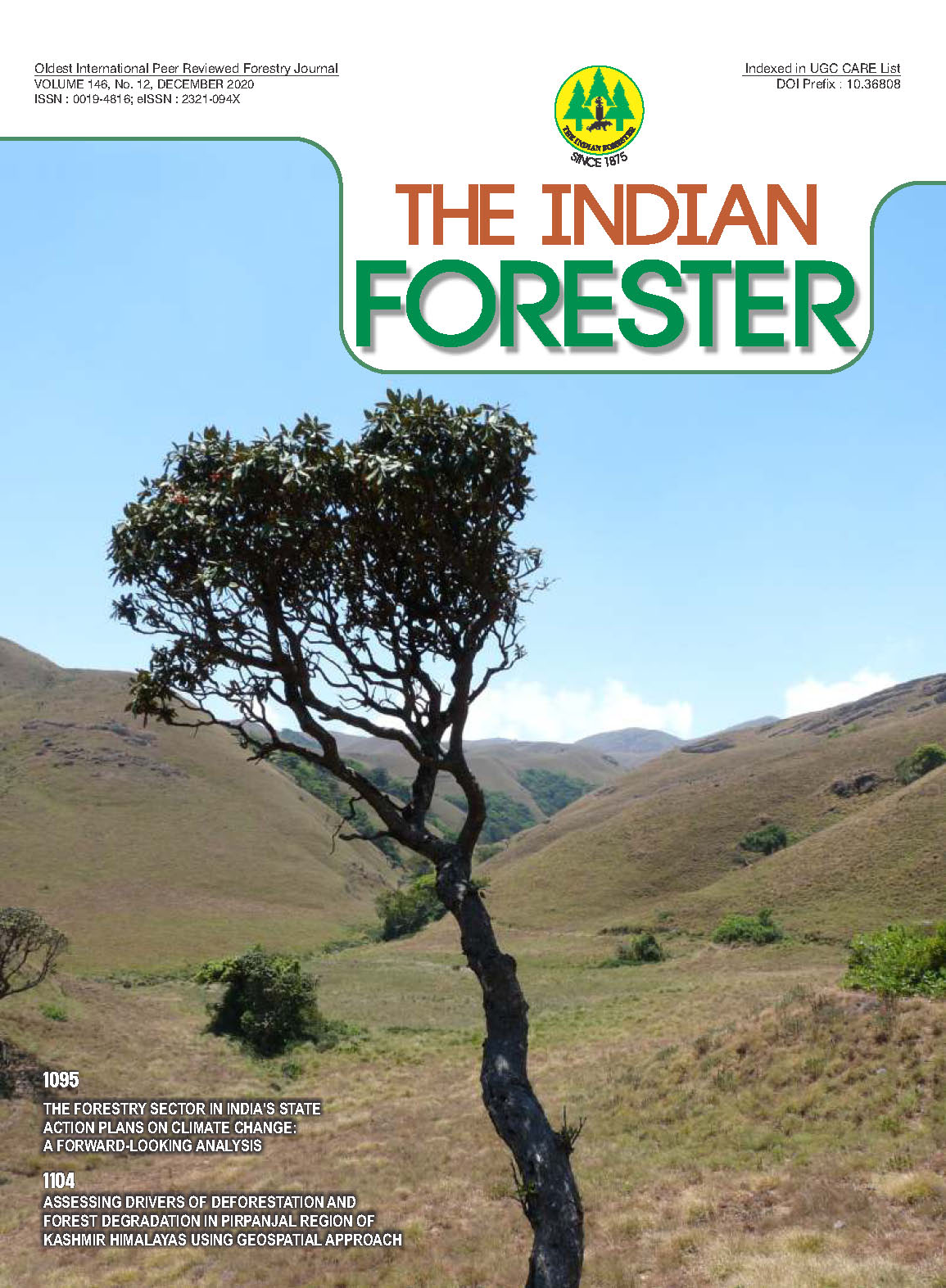Effect of Temperature (°C) and Relative Humidity (R.H. %) on Larval Development of Sal Seed and Seedling Borer Pammene theristis Meyrick (Lepidoptera: Tortricidae)
DOI:
https://doi.org/10.36808/if/2020/v146i12/156768Keywords:
No Keywords.Abstract
No Abstract.References
Bae Y.S. and Park K.T. (1998). The Genus Pammene Hubner (Lepidoptera: Tortricidae) from Korea, with descriptions of two new species. Zoological Studies 37(4): 291-301.
Beeson C.F.C. (1941). Ecology and control of forest insects in India and the neighbouring countries. Vasant press, Dehradun. Reprinted Govt. of India Publication. 1007 pp.
Chatterjee P.N. and Thapa R.S. (1970). Sal regeneration: The problem of Sal seed and seedling borer Pammene theristis Meyrick in Dehradun Sal forests (Lepidoptera: Eucosmidae). Indian Forester, 96(8): 580-586.
Choubey V., Kulkarni N. and Bhandari R. (2004). Incidence of seed insect pests of Sal (Shorea robusta Gaertn. F.). Indian Journal of Tropical Biodiversity, 12: 48-52.
Ghorpade B.R. and Patil S.P. (1991). Insect pests recorded on forest trees in the Konkan region of Maharashtra State (India). Indian Journal of Forestry, 14(3): 245-246.
Guiping Y. and Bangnian G. (2004). Biological characteristics and control of Pammene ginkgoicola. Kunchong Zhishi Zhongguo kun Chong xue Hui, 41 (5): 475-477.
Ping H.Z., Bai Sheng J., Yin Wei D., Xiao Tie L. and Xin Qiang L. (2009). Integrated management technology on main diseases and insect pests of Ginkgo biloba. Guangxi Zhiwu/Guihaia, 29(4): 481-487.
Singh K.P. (2011) Development of temperature and humidity on the development of sal defoliator Ascotis imparta Walk. (Lepidoptera:geometridae) Ind For. Rec.,(Ento)
Downloads
Downloads
Published
How to Cite
Issue
Section
License
Unless otherwise stated, copyright or similar rights in all materials presented on the site, including graphical images, are owned by Indian Forester.





